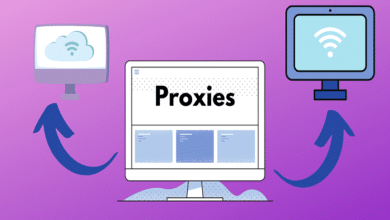Conquering the Mesh: A Complete Guide to Editing STL Files

The vibrant world of 3D printing has unlocked endless possibilities for creators and inventors. However, bringing your vision to life often involves navigating the sometimes-daunting realm of digital fabrication. One crucial aspect of this journey is mastering the art of editing STL files, the standard format used for 3D printing models. Whether you’ve downloaded a ready-made design or created your masterpiece, tweaking, modifying, and repairing STL files becomes essential for achieving the perfect print.
Why Edit STL Files?
Before diving into the how, let’s explore the why. Editing STL files unlocks a multitude of possibilities:
Personalize designs: Download a cool figurine but want to add your initials? STL editing lets you seamlessly incorporate your personal touch.
Fix model errors: Encountered gaps, holes, or intersecting surfaces? Editing tools help diagnose and repair these issues for flawless printing.
Scale and adapt: Need a miniature version of your model or a perfect fit for a specific space? Editing allows you to resize and adjust models with precision.
Combine and modify: Imagine merging two designs or adding intricate details. STL editing empowers you to become a digital sculptor, piecing together your dream creations.
The Arsenal of Editors
Now, let’s meet your trusty allies in the quest for STL mastery. A plethora of software options cater to different levels of expertise and budgets:
Free and Beginner-Friendly
Tinkercad: A web-based platform with a gentle learning curve, perfect for basic edits and modifications.
MeshMixer: Offers impressive sculpting and repair capabilities, ideal for beginners exploring design possibilities.
3D Builder (Windows 10): A pre-installed gem for simple tasks like scaling and merging models.
Intermediate and Advanced
Blender: A free and powerful open-source software, offering a vast array of editing tools for experienced users.
Fusion 360 (Free for hobbyists): A robust CAD software with parametric modeling capabilities, allowing for advanced edits and design modifications.
MeshLab: An open-source platform specializing in mesh analysis and repair, perfect for troubleshooting complex models.
A Step-by-Step Guide
The specifics of editing vary depending on your software and desired outcome. However, these general steps provide a starting point for most basic edits:
Import your STL file: Open your chosen software and import the STL file you wish to edit.
Identify your edits: Clearly define what needs to be changed, whether it’s scaling, adding details, or fixing errors.
Utilize the tools: Each software offers specific tools for your desired edits. Explore the interface and familiarize yourself with relevant functionalities.
Make your modifications: Carefully implement your edits using the appropriate tools. Remember to save your progress frequently!
Export your edited STL: Once satisfied, export the modified STL file in the correct format for your intended use (e.g., 3D printing).
Beyond the Basics
As you gain confidence, delve deeper into the world of STL editing with these advanced techniques:
Boolean operations: Combine or subtract sections of models to create unique designs.
Sculpting: Add intricate details and textures to your creations using sculpting tools.
Parametric modeling: Modify models based on defined parameters for a more flexible and controlled editing experience.
Pro Tips for STL Editing Success
Start simple: Don’t overwhelm yourself with complex edits initially. Practice on basic modifications before tackling advanced techniques.
Understand the limitations: Different software caters to varying levels of detail and complexity. Choose the right tool for your specific needs.
Utilize online resources: A wealth of tutorials, guides, and forums are available online to help you navigate specific software and techniques.
Test and iterate: Printing prototypes of your edited models helps identify and address any issues before committing to a final print.
Don’t be afraid to experiment: Embrace the creative possibilities! Experiment with different edits and techniques to discover your unique design style.
Conclusion
Editing STL files unlocks a universe of creative possibilities. From personalizing pre-made models to sculpting your own masterpieces, the ability to manipulate these digital building blocks empowers you to bring your imagination to life. By understanding the tools available, honing your editing skills, and embracing experimentation, you’ll become a master of the mesh, ready to conquer any 3D printing challenge. So, take the plunge, explore the world of STL editing, and watch your vision materialize, one triangle at a time!
FAQ
1. What is the best software for editing STL files?
The “best” software depends on your needs and level of expertise. Beginners can opt for beginner-friendly options like Tinkercad or MeshMixer, while intermediate and advanced users may prefer Blender or Fusion 360. Consider trying free options first before investing in paid software.
2. Can I edit STL files on my phone?
Several mobile apps allow basic STL editing functionalities, such as scaling and rotating models. However, the limitations of screen size and touch controls might make them less suitable for complex edits.
3. How do I fix errors in my STL file?
Many software options offer automatic repair functions. Additionally, learning about common errors like holes, intersecting surfaces, and non-manifold geometries will help you diagnose and fix them manually.
4. Can I convert an STL file to another format?
Yes, most STL editing software allows conversion to other 3D model formats like OBJ, 3MF, or DXF. Choose the format suitable for your intended use (e.g., further editing, 3D printing).
5. Where can I find help and resources for learning STL editing?
A vast number of online tutorials, guides, and forums cater to different software and editing techniques. Additionally, online communities dedicated to 3D printing offer valuable support and advice from experienced users.



